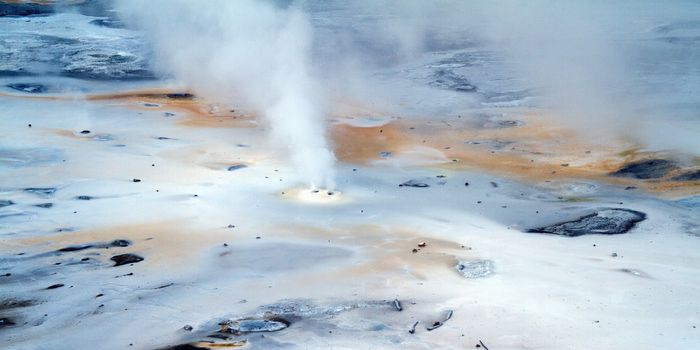Videos
Firing Neurons | Cell Dance 2010, Public Outreach Video Winner
AUG 26, 2014 12:00 AM PDT
Share
Now Playing: They Come From Outer Space to Destroy the World
On February 13, 2013 a meteor exploded over Chelyabinsk, Russia. Glowing 30 times brighter than the sun, the 500 kiloton blast was the biggest of its kind in 100 years. 1,500 people were injured and thousands of buildings were damaged. The meteor's arrival was a surprise because of its small size and the direction it came from. But, the Chelyabinsk incident had a silver lining because it alerted us to the very real threat that exists from these smaller meteors. Another small asteroid bursting apart over a city is a much bigger possibility than the dreaded huge one that destroys the Earth. "The chances are virtually certain that we are going to be next hit by a little asteroid that is a "city buster" long before we are hit by a bigger one," said physicist Mark Boslough of Sandia National Laboratories. Despite this, astronomers have long focused on detecting the biggest asteroids that may destroy the Earth. Scientists estimate they have identified about 95 percent of the potential "end-of-the-world" asteroids that are at least 1 km (.6 miles) wide. But, they believe there are over 1 million near-Earth asteroids at least 30 m (100 feet) wide, and that less than 1 percent of these have been discovered
Now the United Nations Committee on the Peaceful Uses of Outer Space has moved to address the asteroid threat. A U.N. action team on near-Earth objects (NEOs) has recommended the creation of an International Asteroid Warning Network (IAWN). Data on NEOs would be gathered and analyzed and national authorities would be forewarned of a potentially dangerous NEO. In addition, a Space Mission Planning Advisory Group (SMPAG) has been meeting to plan for future asteroid impacts. One goal is to foster international collaboration on developing methods of asteroid deflection.
There is also a nonprofit organization, the B612 Foundation, dedicated to protecting Earth from asteroids. Since you can't protect yourself from what you can't see, their first step is to identify threatening asteroids. So, the focus of B612 right now is the "Sentinel Mission." Here's how it's described on their website: "Sentinel is a space-based infrared (IR) survey mission to discover and catalog 90 percent of the asteroids larger than 140 meters in Earth's region of the solar system. The mission should also discover a significant number of smaller asteroids down to a diameter of 30 meters. Sentinel will be launched into a Venus-like orbit around the sun, which significantly improves the efficiency of asteroid discovery during its 6.5 year mission." The foundation hopes to launch Sentinel in 2018 and expects to find 500,000 NEOs within six years.
We do have the means to divert threatening asteroids as long as we have enough time to act. Deflecting smaller asteroids of up to about 400 m (1,300 feet) would likely require two space missions. In an interview with SPACE.com, former Apollo astronaut and B612 co-founder Rusty Schweickart said the first mission would send a robotic probe on a collision course with the asteroid, knocking it off course via kinetic impact. The second would launch a "gravity tractor" spacecraft to fly along with the asteroid, nudging it further away using a tiny but steady gravitational tug.
Bigger asteroids would require a different approach. But, we could even deflect a huge 10 kilometers-wide (6 miles) mass like the one that wiped out the dinosaurs 65 million years ago. This would likely involve sending spacecraft to hit it over and over again, possibly over decades, but because of the potential catastrophe it could cause we would really have no choice. At a conference last fall, Ed Lu, chairman and CEO of the B612 Foundation, said "If you can hit it with a kinetic impactor, you can hit it with 10 or 100 of them." There has even been serious discussion about blowing up large asteroids with nuclear weapons.
Destructive asteroid strikes are not just the stuff of science fiction. They can and do happen, as shown by last year's Russian strike. If one was to happen over a densely populated area, the results could be horrific. But, now for the first time in human history we have the knowledge and tools to identify these threatening space rocks and stop them.
Now the United Nations Committee on the Peaceful Uses of Outer Space has moved to address the asteroid threat. A U.N. action team on near-Earth objects (NEOs) has recommended the creation of an International Asteroid Warning Network (IAWN). Data on NEOs would be gathered and analyzed and national authorities would be forewarned of a potentially dangerous NEO. In addition, a Space Mission Planning Advisory Group (SMPAG) has been meeting to plan for future asteroid impacts. One goal is to foster international collaboration on developing methods of asteroid deflection.
There is also a nonprofit organization, the B612 Foundation, dedicated to protecting Earth from asteroids. Since you can't protect yourself from what you can't see, their first step is to identify threatening asteroids. So, the focus of B612 right now is the "Sentinel Mission." Here's how it's described on their website: "Sentinel is a space-based infrared (IR) survey mission to discover and catalog 90 percent of the asteroids larger than 140 meters in Earth's region of the solar system. The mission should also discover a significant number of smaller asteroids down to a diameter of 30 meters. Sentinel will be launched into a Venus-like orbit around the sun, which significantly improves the efficiency of asteroid discovery during its 6.5 year mission." The foundation hopes to launch Sentinel in 2018 and expects to find 500,000 NEOs within six years.
We do have the means to divert threatening asteroids as long as we have enough time to act. Deflecting smaller asteroids of up to about 400 m (1,300 feet) would likely require two space missions. In an interview with SPACE.com, former Apollo astronaut and B612 co-founder Rusty Schweickart said the first mission would send a robotic probe on a collision course with the asteroid, knocking it off course via kinetic impact. The second would launch a "gravity tractor" spacecraft to fly along with the asteroid, nudging it further away using a tiny but steady gravitational tug.
Bigger asteroids would require a different approach. But, we could even deflect a huge 10 kilometers-wide (6 miles) mass like the one that wiped out the dinosaurs 65 million years ago. This would likely involve sending spacecraft to hit it over and over again, possibly over decades, but because of the potential catastrophe it could cause we would really have no choice. At a conference last fall, Ed Lu, chairman and CEO of the B612 Foundation, said "If you can hit it with a kinetic impactor, you can hit it with 10 or 100 of them." There has even been serious discussion about blowing up large asteroids with nuclear weapons.
Destructive asteroid strikes are not just the stuff of science fiction. They can and do happen, as shown by last year's Russian strike. If one was to happen over a densely populated area, the results could be horrific. But, now for the first time in human history we have the knowledge and tools to identify these threatening space rocks and stop them.
You May Also Like
Loading Comments...









